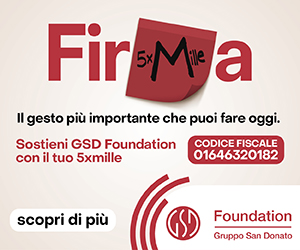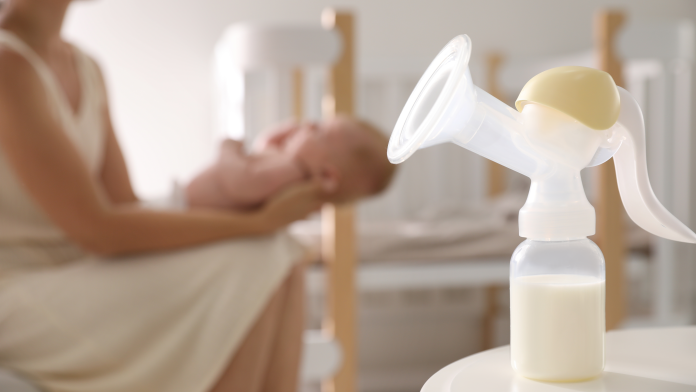For the newborn the breast milk it is a food without equal because it provides all the nutrients it needs in the first phase of its life. In addition to containing proteins, assimilable iron and some precious fats, it is composed of bioactive and immunological substances. These are able to protect the little one from possible viral and bacterial infections, atopic dermatitis and other forms of allergy, from metabolic diseases and also from pollution. It is no coincidence that the World Health Organization recommends breastfeed the baby exclusively for the first six months. This practice should last for two years or more, according to the wishes of the mother and baby.
Because of early birthHowever, some mothers are not always able to produce milk and breastfeed their newborn child. A real problem since the scientific community believes that human milk can increase the chances of survival of the prematurepromoting their growth and development.
This is why it is essential that healthy mothers of full-term babies donate a part of their milk, which is often produced in excess. Perhaps not everyone knows, in fact, that a mother’s milk is the same for everyone. Any woman in good health and breastfeeding can contribute to donating without fear of depriving her child of primary food. Despite what one might imagine, in fact, the more production is stimulated, the more milk is produced.
Breast milk: who can donate it and how it should be done
The Italian Association of Donated Human Milk Banks (AIBLUD), a non-profit organization that promotes breastfeeding and the donation of breast milk by working together with Neonatology and Neonatal Intensive Care Centers, informs that all mothers in good health, who breastfeed during the first year of the child’s life and who produce a quantity of milk greater than his needs, they can become donors.
Women who want to donate their milk can contact one of the Human Milk Banks (BLUD), structures created to select, collect, process, store and distribute donated breast milk. Here they can undergo an anamnestic questionnaire and a simple screening, which consists in the evaluation of the clinical history and in the execution of serological tests (hepatitis B, hepatitis C, HIV infection).
Human Milk Banks: where are we in Italy?
With 41 Banks active in its territory, Italy is the first country in Europe, followed by Germany with 37 and France with 36. However, despite the numbers being favourable, in our country the need for donated human milk in the most vulnerable infants is still not satisfied. The reason? BLUDs are unevenly distributed and are not networked.
The “Ad hoc Working Group” on donated human milk (LUD), set up by the Ministry of Health and made up of members of the Italian Association of Donated Human Milk Banks (AIBLUD), the Breastfeeding Technical Table (TAS) and the Italian Society of Neonatology (SIN ), has produced a document on the subject. This contains proposals to valorise donated human milk and obtain greater availability:
- ensure the supply of LUDs in areas currently lacking by promoting the creation of new BLUDs and/or regional and inter-regional networks of BLUDs
- improve the efficiency of BLUDs
- create an integrated system of BLUD and neonatology centers to promote donation, facilitate collection and optimize the use of donated milk
- recognize and promote the use of LUD as a strategic option for feeding newborns and infants during emergency situations (earthquakes, floods and other environmental disasters).
Who can’t donate breast milk?
There are, however, situations where donation is prohibited. As AIBLUD recalls, in fact, the criteria for exclusion from the donation are represented by an inappropriate lifestyle, particular maternal therapies, infectious diseases affecting the mother (verifiable through serological tests) but also risk behaviors, such as the use of drugs and/or alcohol, cigarette smoking, taking certain medicines, the presence of acute or chronic pathologies, recent transfusions.
How milk is expressed
The milk can be expressed directly in a donated human milk bank or at home. Expression can be done by hand or with a breast pump (manual or electric). The staff of the center to whom one addresses provides all the information and the necessary material so as not to make mistakes. Be careful, milk can easily become contaminated if it is not stored properly. For this reason it is necessary to respect some simple precautions, such as wash your hands and the breast pump thoroughly before and after expressing.
12% drop in donated breast milk due to Covid
Due to the pandemic there has been a decrease of about 12% of human milk donated. This is what emerges from the third survey by the Italian Association of Donated Human Milk Banks on the activity of Donated Human Milk Banks (BLUD) in Italy in the year 2021. «The suspension of the home collection service, the impossibility of leaving home due to the lockdown and the donors’ fear of going to the hospital to donate milk were among the main reasons that led to discouraging donation”, he comments Guido E. Moro, AIBLUD President.
«Therefore, many premature and pathological newborns have had to give up this precious food. Unfortunately, in this emergency, our country has not shown itself ready to intervene to remedy the critical situation. During these tragic situations, the survival of newborns and infants may depend on their ability to access breastfeeding and/or donated human milk.
The survey data show that, in the period preceding the pandemic (2018-2019), a significant increase was taking place in the number of donors and in the volume of milk collected, while in 2020 there was a sharp decline in the number of donors with a return to the values of 2016.
Read also…

